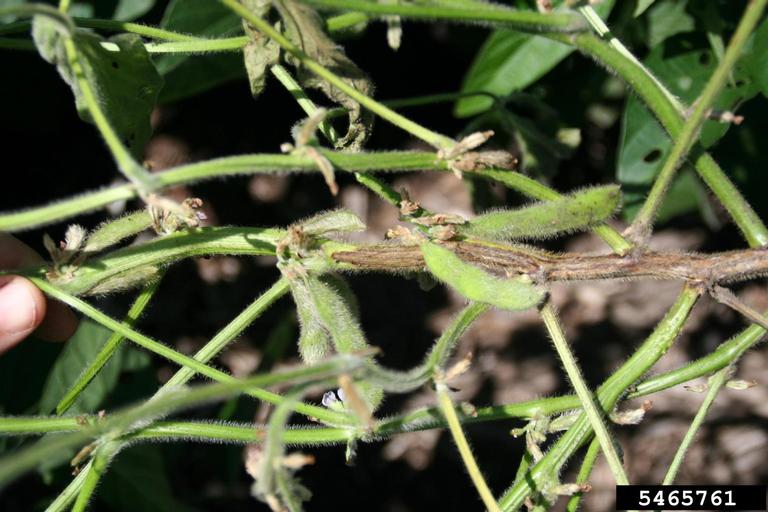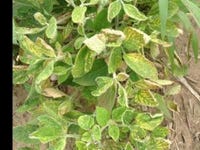August 23, 2016

Sudden death syndrome
I was scouting the sudden death syndrome study and symptoms have started. And due to the calls I am getting it is also in some producer’s fields. Sudden death syndrome (SDS) is a fungal disease of soybean and is limited to a few locations in Ohio.
Interestingly, these fields where SDS occurs in Ohio, also have high SCN populations. These two culprits often appear together. The fungus is now called Fusarium virguliforme and colonizes the tap root and roots so they turn dark in color.
After the rains last week, it may be possible to observe the signs of the pathogen on the tap roots, with the formation of pale blue to blue green conidia. This fungus produces a toxin which is why the leaves have the irregular shaped yellow spots forming between the veins which turn necrotic and eventually cause early defoliation of the plants. 
The internal tissue of the stem, the pith is white – compared to brown stem rot which is brown. In SDS, the toxin moves up the plant not the fungus; whereas in Brown stem rot the fungus is actually colonizing and degrading the plant tissue. Severity of infection, timing of disease onset, SCN population numbers all contribute to the amount of yield loss that will occur.
White mold or Sclerotinia stem rot
First plants dying from Sclerotinia stem rot were reported last week. Even with the dry weather during flowering, infection did occur. As you recall we had many cool nights in early July and heavy dews, so my hunch is that contributed to the favorable environments.
Sclerotinia is another fungal pathogen that infects the old and dying flowers. This fungus secretes an acid which degrades the tissue, sometimes appears water soaked on the stems and then the fungus just takes off, becomes very white and fluffy on the stems. It will then form hard black – irregular shaped sclerotia which serve as the survival structures and can be easily moved around the farm on equipment.
Diaporthe Stem canker
This is one that we have not observed in Ohio very often. Again this is a truck stopper as you drive by fields and see that the tops are dying back too early. This fungus also infects plants at the third or fourth node and basically girdles the plants.
Infections occurred when the plants were in the early vegetative stages and has been “hanging out” waiting for the plant to move into the final growth stages. The key difference between this and Phytophthora is that the plant will be green, no internal infection in the lower three nodes = whereas with Phytophthora stem rot on highly susceptible varieties, the plant is colonized from the base of the plant up the stem.
Phytophthora stem rot
I can’t leave this one out as there are some soybean varieties that do not have the full resistance package we need for Ohio fields. After the rains over last weekend and off and on last week, stem rot is showing up in the field that were saturated. Plants will turn yellow and wilt, leaves will cling to the plants as it is dying. Again, on susceptible varieties, the chocolate brown canker will be moving up the stem.
Variety selection is key to managing all of these late season diseases. Begin to scout your fields, if you find one of these – make note of that variety and make sure to make a change.
Do not plant the same variety in the same field as you now know that you have inoculum in that field. For Sclerotinia in particular, what amounts to a few scattered plants this year, can amount to a lot more down the road. In all of field studies, where there is a resistant variety planted we are not observing the disease. Click here to see a summary PDF of late season soybean diseases.
You May Also Like




